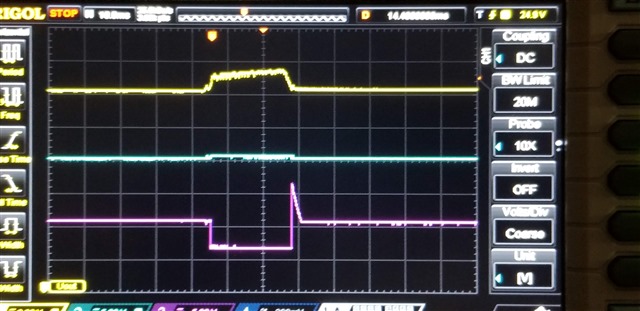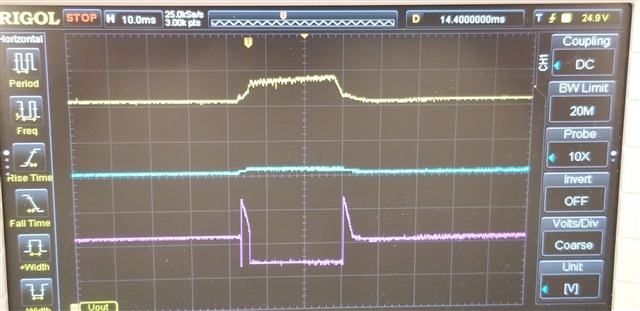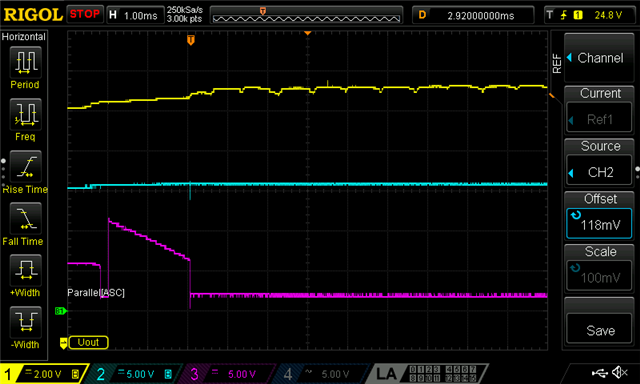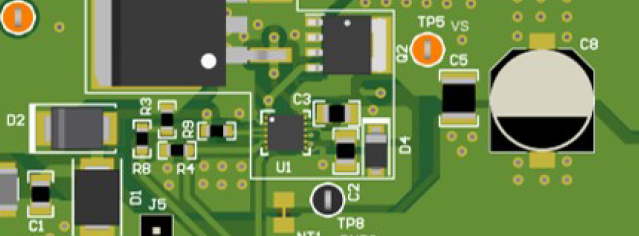Other Parts Discussed in Thread: LM7480,
I am using the EVM and monitoring Vin, Vout, and Dgate. The load at the time of the test is 2 A.
Here are two examples when I create a blip on the Vout. All signals are 5 V per division and the time is 10 ms per division.

The signals are:
- Yellow: Vout
- Blue: Vin
- Purple: Dgate
The blip on the 24 V is caused by using an extra power supply fed through diodes connected to Vout and controlled by a momentary switch. The blip caused by my secondary power supply makes the voltage go to about +27 V for about 20 ms.
The gate to the MOSFET is turned off immediately and raised when the blip disappears. This is good; the Vin power supply rises slightly, but not enough to kill the primary power supply connected to Vin.
But here is another example:

In this case, Dgate is immediately taken low, but then Dgate is driven hard on. It then takes the LM7480 a full 3 ms to realize it should be doing something and drives the gate off.
Fortunately, although the primary power supply (at Vin) got a bigger blip, it was insufficient to kill it.
Can you suggest how the circuit can be modified to avoid this long delay in turning off the controlling MOSFET (Q2)?





